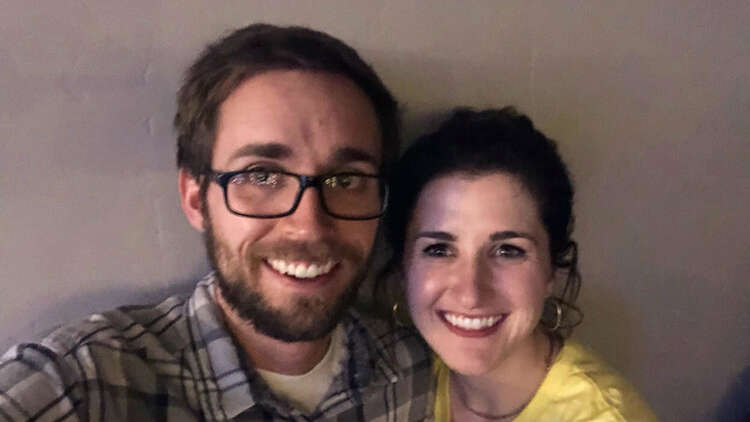Photos courtesy of Thirty Day Bae.
Cover photo: Jake and Emily, one of three couples from season one of the Thirty Day Bae project, continued dating at the end of the experiment. They later broke up.
With the advent of dating apps, single people often feel like they are drowning in a sea of endless choices. It can be daunting to pick a partner out of the hundreds of options. Questions like, “Is there someone more right for me out there?” never cease.
The minds behind Thirty Day Bae want to change that mentality.
The experiment goes like this: what if two people — close friends, couples or crushes — committed to a relationship for 30 days? Really commit, which includes daily contact, couples counseling and labelling each other “boyfriend” and “girlfriend.”
Christine Cooke, leader of the creative team behind the project, said she pulled inspiration from dating shows such as “The Bachelor” and “90 Day Fiancé.” She wanted to try something similar in Utah.

“I’m around singles all the time, and I constantly hear horror stories about dating,” Cooke said. “A lot of it comes from dating app culture, where you can move on if it doesn’t work immediately. We wanted to lean in and see what would happen if people were committed at the start.”
The application process to be a “bae” involves a Myers-Briggs personality test, a quiz determining “attachment style,” and a questionnaire about who the applicant is and what they prioritize in relationships.
Davi Johnson, Thirty Day Bae’s “matchmaker,” said she had always been fascinated by how different personalities interacted.
“I’ve done a weird amount of research on compatibility,” Johnson said. “The application is about eighty questions long, so we mean business.”
Applicants are are paired up after being selected and interviewed by Johnson.
Season one featured three couples. During their thirty days, they are committed to seeing their “bae” every day. FaceTime or phone calls can only be used twice a week, and two of the five in-person meetups must be proper dates.
In addition, couples are to attend free relationship counseling once a week. They record their thoughts on the experiment and the logs are posted to the project’s website. At the end of thirty days, they can decide whether or not to keep dating.
Regardless of that decision, Johnson said that both she and the couples from the first season learned something valuable about their approach to dating.
“I only watched the program, but it’s interesting to see how I think of dating differently now,” said Johnson. “I feel less anxious about it because I can spend time getting to know someone just as a person, not as fulfilling a role for me.”
Cooke contributes much of that anxiety to the urgency in Latter-day Saint culture to get married. She believes it also has to do with the area’s single population’s hesitance about dating.
“There’s a lot of pressure in the [LDS] culture,” Cooke said. “We want to help people break out of that. Can’t we just get to know people as people, and figure out the rest later?”
In the project’s second season, four couples will be selected. In addition to Salt Lake County, applicants from Utah County are being accepted. There is also a new joint application for two people who know each other to elect to go through the process together — an “escape from the friendzone,” as the team puts it.
“We hope that if you’ve been discouraged about dating in the past, you can join in and maybe change your perspective in the process,” Johnson said. “We want to see people dating differently.”
Applications for the second season of Thirty Day Bae close April 21 and can be found here.









